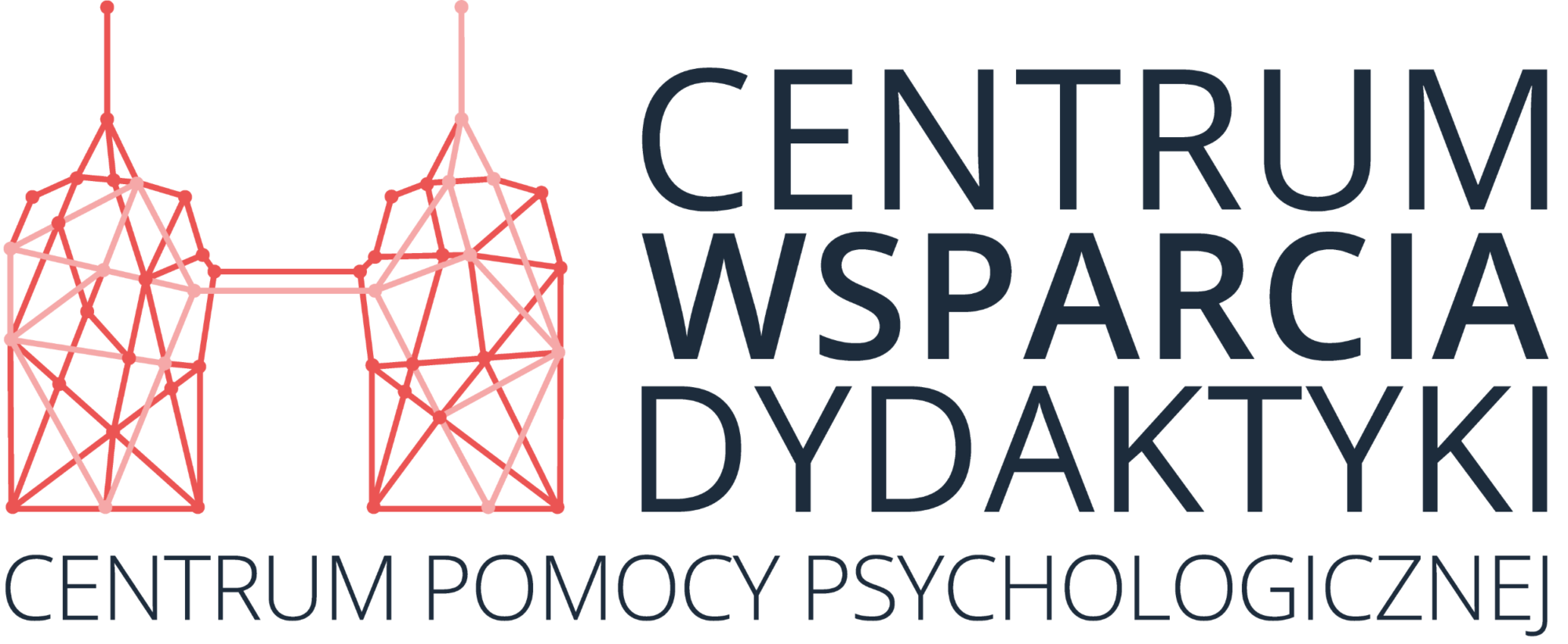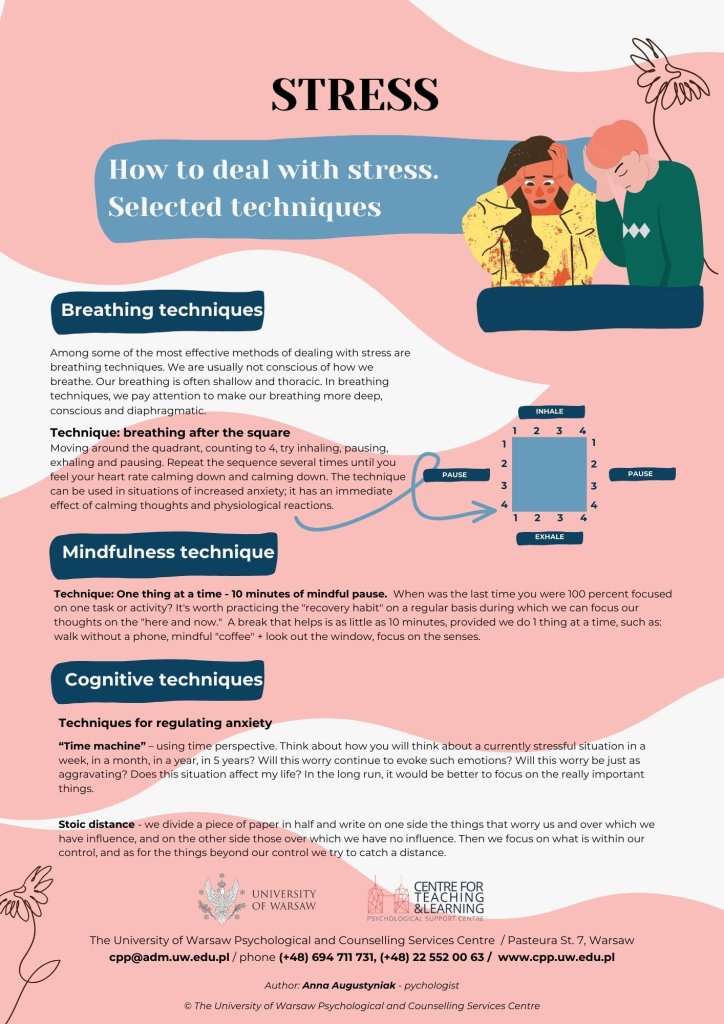How to deal with stress – selected techniques

How to deal with stress – selected techniques
Breathing techniques
Among some of the most effective methods of dealing with stress are breathing techniques. We are usually not conscious of how we breathe. Our breathing is often shallow and thoracic. In breathing techniques, we pay attention to make our breathing more deep, conscious and diaphragmatic.
Technique: breathing after the square
Moving around the quadrant, counting to 4, try inhaling, pausing, exhaling and pausing. Repeat the sequence several times until you feel your heart rate calming down and calming down. The technique can be used in situations of increased anxiety; it has an immediate effect of calming thoughts and physiological reactions.
Mindfulness technique
Technique: One thing at a time – 10 minutes of mindful pause. When was the last time you were 100 percent focused on one task or activity? It’s worth practicing the “recovery habit” on a regular basis during which we can focus our thoughts on the “here and now.” A break that helps is as little as 10 minutes, provided we do 1 thing at a time, such as: walk without a phone, mindful “coffee” + look out the window, focus on the senses.
Cognitive techniques
Techniques for regulating anxiety
“Time machine” – using time perspective. Think about how you will think about a currently stressful situation in a week, in a month, in a year, in 5 years? Will this worry continue to evoke such emotions? Will this worry be just as aggravating? Does this situation affect my life? In the long run, it would be better to focus on the really important things.
Stoic distance – we divide a piece of paper in half and write on one side the things that worry us and over which we have influence, and on the other side those over which we have no influence. Then we focus on what is within our control, and as for the things beyond our control we try to catch a distance.
Content prepared by Anna Augustyniak – psychologist

